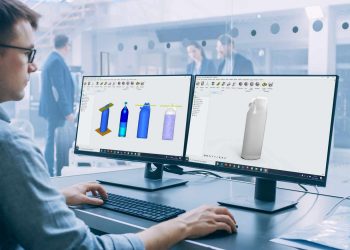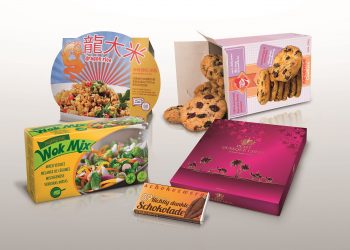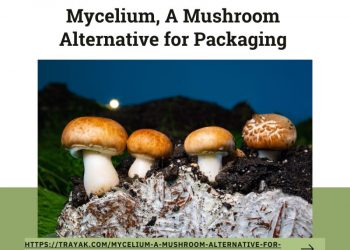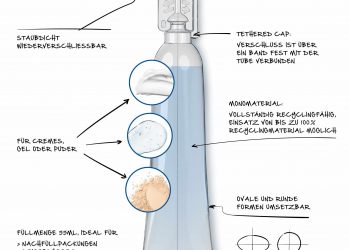India has always been an agrarian economy and the climatic conditions make our country ideal for agriculture and horticulture. About 58% of the Indian population depends on agriculture as its primary source of livelihood. What’s more, agriculture contributes to around 17-18% of the country’s GDP.
In terms of fruits and vegetables, India is the world’s second-largest producer. In 2016, the country produced 90.2 million metric tonnes of fruits and 169.1 million metric tonnes of vegetables, according to Agriculture & Processed Food Products Export Development Authority.
Being one of the biggest producers of fruits and vegetables in the world, it is only natural that India exports a great deal of produce, both fresh and dried. Some of the most significant exports include potatoes, tomatoes, onions, legumes, cashew nuts, coconuts, grapes, and figs.
Despite the high production values, 40% of the annual produce is wasted due to the lack of infrastructure, outdated harvest technology, and poorly managed storage and handling facilities. According to a recent report by Reuters, the annual losses incurred due to food wastage comes to around Rs. 88,800 crore (i.e. Rs. 244 crore per day). In addition, post-harvest losses amount to Rs. 1 lakh crore!
How Punnets and Trays Can Save the Day
By definition, punnets mean any tray used for packaging of fruits, whether hinged clamshells or open top trays.
As in the case of most agricultural products, horticultural produce has a short shelf life that can range from a few hours to a few weeks at room temperature. As a result, packaging plays a major role in preserving and protecting the produce for a longer duration as well as providing an assurance of quality and enhancing convenience.
As a result of growing consumer awareness and the increasing demand for value and hygienic products, packaging has slowly started gaining traction. The stringent export market is also one of the factors to influence this trend.
Before we talk about how packaging can help in dealing with the issue of food wastage, it is important to understand the marketing cycle when it comes to agricultural produce. Below is a flowchart to depict the journey of agricultural produce from farmers to ultimately the retailers.
During the multi-step marketing cycle shown above, there are a number of mechanical, climatic, and biological factors that can lead to wastage. For example, the damage during transit is one of the biggest
culprits that leads to the wastage of the produce. Besides, Horticulture products are highly perishable and fruits and vegetables are composed of living tissue even after harvesting. As a result, they are susceptible to climatic conditions, decay, and distribution hazards. Hence an ideal packaging for any horticulture produce must:
> Prevent bruising and physical injury to the produce
> Prevent microbial contamination and deterioration
> Provide ventilation for gas exchange to allow respiration
> Offer protection against moisture loss (which leads to weight loss)
> Slow down the respiration rate, thereby delaying the ripening process
> Be convenient to use
> Have aesthetic and branding possibilities
What Makes Punnets and Trays the Hero
They Provide Optimal Protection
Punnets are one of the best options for providing protection to the produce. They are made of PET that can safely enable the transportation of fruits and vegetables across long distances. They also feature air-holes that improve air circulation and promote respiration, ensuring a longer shelf life.
They are Made From High-Quality Materials
Punnets at AVI Global Plast are made of r-PET films, which meet global standards for packaging materials. They are completely safe for food storage and meet the stringent requirements for product safety.
They are Eco-friendly
Since punnets are 100% recyclable, they don’t cause pollution by occupying landfills. With responsible recycling practices, the environmental impact of punnets is extremely low.
They Offer an Attractive Presentation
Like trays, punnets exude an image of quality. They are highly customizable and can be manufactured with brand logos and labels with barcodes and product information can be applied on the lid with ease.
They are Easy to Use
Punnets and trays also offer maximum convenience to the consumers. They can be easily resealed and used for a long time. In addition, some on-the-go packaging options also provide consumers a healthy snacking choice.
Trays are rectangular plastic containers used to pack various fruits. They are excellent options for storing produce as they offer individual secure cavities and strategic holes for ventilation. These open top trays can be bifurcated into:
A. Overwrap Trays
These are open trays made using various plastic materials like PET, PVC, HIPS, PP or moulded pulp. They are recyclable, and hence do not pile up in landfills, causing pollution. Packhouses and retailers use these trays to pack the produce and then over wrap them using Cling Films/Stretch wrap films. Produce commonly packed in such packs include Mushrooms, Baby Corns, Beans, Chillies, Cut Vegetables, Salads, and Premixed Vegetables for special cuisines.
Advantages:
> Easy to use
> No requirement for setting up pack houses
> They offer protection to the produce and enhance the aesthetics
> Prevents pilferage
B. Heat Seal Packs
These are open trays which are mainly made using materials like PET and PP. Packhouses use these trays to pack the produce and then using a heat seal equipment to add a layer of plastic film to the collars of the tray. Some of the commonly edibles these packs are used for are Grapes, Berries, Other Soft Fruits, and Tomatoes.
Advantages:
> Ideal for high output packs
> Offers branding possibility on the Heat Seal Films
> Prevents pilferage
> Special Anti-fog Lidding Films and perforated films can be used for better visibility and promoting respiration
> Lightweight packs, making them easier and more fuel-efficient to transport
C. Trays for Flow Wrapping and Netting
These trays are very similar to the open top heat Seal trays. However, instead of heat sealing the trays with a lidding film, the trays are flow wrapped using a suitable film or net. These are ideal for packaging Apricots, Peaches, Nectarines, Citrus Fruits, Beef Tomatoes, and Pears.
Advantages:
> Prevents pilferage
> Prevents bruising caused by improper handling of the fruit at retail counters and keeps a check on the ripeness of the fruit
> Special Anti-fog lidding films and perforated films can be used for better visibility and respiration
> Heavier weight packs for higher durability
D. Trays for MAP Packing
MAP packing is gaining popularity and acceptance across the globe for all perishables. MAP packing allows brand owners to control the atmospheric conditions inside the pack. The controlled presence of certain gases helps in extending the overall shelf life of the pack.
Along with creating the right atmospheric conditions inside the pack, it is equally important to use the right materials (trays and lidding films) to maintain these conditions. As we all know the ripening of the produce accelerates at a much higher pace rather after the produce is cut. For instance, Pomegranate Arils, Diced Coconut, Diced Coconut, Cut Pineapple Slices would have a much shorter life cycle than the same produce in uncut form.
Advantages:
> Shelf Life Extention
> Convenience
> Healthier snacking options
> Branding possibility
> Possibility of offering small portion sizes
E. Clamshell Tray (Popularly called Punnets)
Plastic punnets are one of the most commonly used food packaging solutions. They are ideal for storing fruits, fungi, mushrooms, salads, and vegetables. They are made from solid PET material and are highly durable and great for mixed-sized soft fruits. They come in a variety of sizes for consumer comfort and can meet the requirements of any producer or wholesaler.
Punnets and Trays offered by AVI Global Plast Pvt. Ltd.
AVI offers a wide range of Punnets and Trays in various shapes and sizes to suit the requirement of various fruits and vegetables including Grapes, Strawberries, Kiwi, Cherry, Apples, and Plums.
AVI Punnets are sold under its flagship brand “PRIME”. Prime punnets are Food Certified under EU and REACH guidlines. AVI has a state-of-the-art closed loop manufacturing facility which is BRC certified and SEDEX qualified.
AVI is dedicated to catering to the specific requirements of the Indian Horticulture Industry and to raise the overall offering of Indian Fruits and Vegetables.
Benefits of Using Punnets and Trays For Packaging (Case Studies)
1. Strawberry Packaging in India
Earlier, strawberries in India were packed in plastic punnets that were made from extremely harmful materials which weren’t safe for food packaging. As a result, the trend started shifting to the use of punnets made from recycled PET.
At AVI, we produce the films using an A-B-A technology where despite using 80% recycled post consumer waste, the packs remain completely safe food packaging. This is because the contact layers are made using virgin APET. This makes our products environmentally-friendly as well as food safe.
2. Kiwi in India: More For Less
Kiwi has always been considered as a premium fruit available only to the classes. However, AVI made it possible for leading brand owners to develop retail packs that offered a variety of
pack sizes. Now, based on the demographics of any given region, brand owners can offer 2, 3 or 4 pieces of the fruit, making it affordable even for the masses. As a result, even mom and pop stores, and not just big supermarkets in Tier A and B cities, around the country have started selling kiwis.
Punnets and trays play a major role in horticulture packing by extending the shelf life and hence, reduce the amount of food waste. At AVI Global Plast, we have been offering expert packaging solutions for over two decades. With the right kind of packaging, fruits and vegetables can stay fresh longer and prevent any mechanical damage or physiological changes during transit or storage.
Director, AVI Global Plast
Sukhdeep Sethi is a qualified Chartered Accountant from the Institute of Chartered Accountants of India. He has also received certification for Executive Management from INSEAD, France. He has over 15 years’ experience in sales, marketing, strategy and product development in the rigid PVC and Pet sheets and thermoformed products in India and exports. He has been integral to the expansion and diversification of AVI Global Plast’s product and market mix, working with leading domestic and multinational brands.






